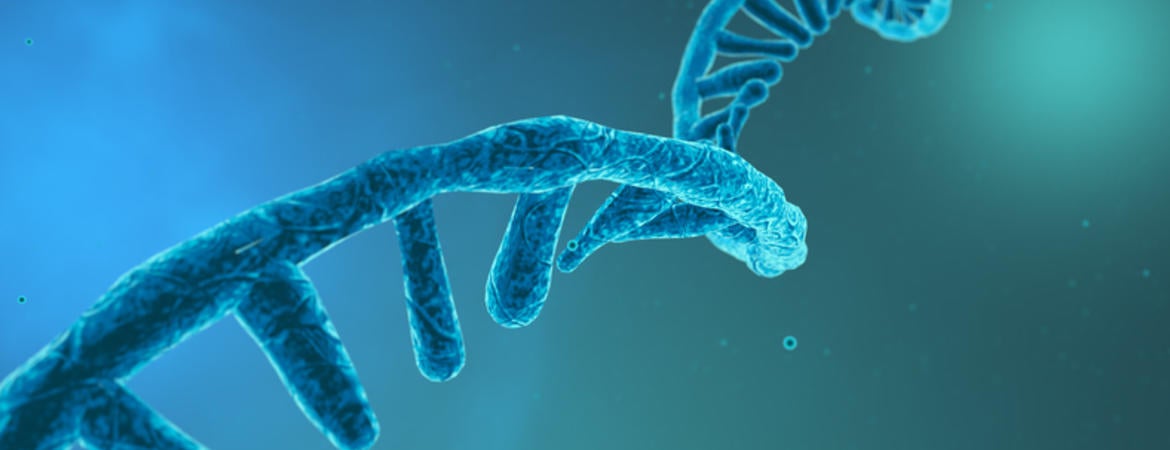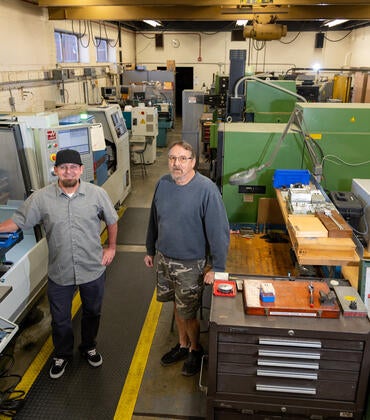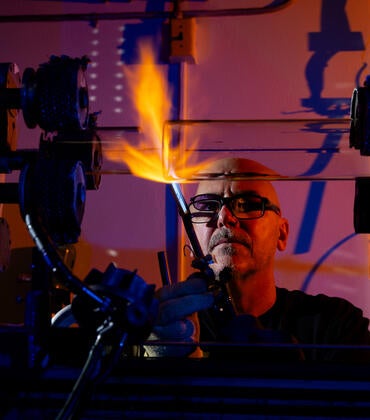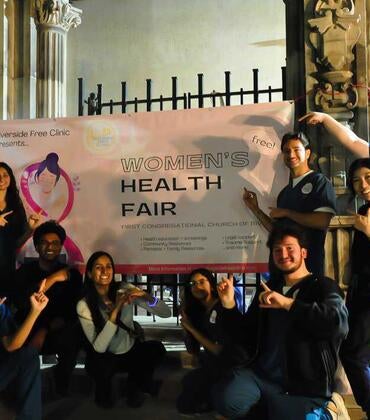Ribonucleic acid, or RNA, is present in all living cells. Most often single-stranded, RNA is the lesser known cousin of the double-stranded DNA. It is, however, important to basic cell biology — in coding, decoding, regulating, and expressing genes — and for diagnosing human disease. The body uses RNA to construct cells, respond to immune challenges, and transport amino acids within cells.
Recognizing RNA biology as a key area in modern biology and biomedicine, the University of California, Riverside, has launched the Center for RNA Biology and Medicine, which is home to more than 30 investigators from all over campus. Sika Zheng, an associate professor of biomedical sciences in the School of Medicine, is the director of the center. A Q&A with Zheng follows:
Q. Why did you decide to launch this center and why focus on RNA?
RNA biology has emerged as one of the most influential areas in modern biology and medicine. Cutting-edge advances in RNA biology and technology are propelling medicine and our understanding of nature across broad new frontiers. To name a few at the forefront: CRISPR allows us to modify the genome and to correct disease-causing mutations. In the past two years we witnessed the power of mRNA vaccines, a new kind of vaccine technology, in combating SARS-CoV-2 virus infection. They probably represent only the tip of the iceberg of RNA’s transformative power. Several features further enable RNA’s transformative power. First, as the key intermediate from genotypes to phenotypes, RNA is a natural target for effective manipulation of biology. Second, RNA is so universal that any breakthrough application will likely replicate across the board to have a far-reaching impact. Third, RNA is composed of only four simple nucleotides, making it a difficult biology language to decipher, but much easier to write and read from experimental and engineering points of view. These render almost unlimited potential for RNA to transform our medicine and society once we unlock the RNA codes and harness RNA-based tools.
Q. Why is now a good time to launch this center at UCR?

The Center for RNA Biology and Medicine cultivates a vibrant, dynamic research environment that amplifies UCR’s deep and unique strengths in RNA research, and interfaces scientific discovery with medical and industrial applications. Each lab’s RNA research at UCR is so different that we could easily fall into our own silo. But the diversity becomes a strength when we pull people together. I want the center to be the platform and focal point to nucleate researchers, stimulate collaborations, form synergies, and facilitate interdisciplinary interactions by connecting and supporting teams of researchers from different disciplines within RNA, across multiple UCR departments. And the best time to do good thing is always now if it has not been done before.
Q. What sets this center apart from other centers like it elsewhere?
There are several RNA centers nationwide; each has its own strength, and some are very successful. Our center is new and has yet to carve its path forward. The difference will be made by our center investigators and trainees, and I see the center as the enabler to strengthen our members’ success in addressing today’s and tomorrow’s RNA-centric industrial, biomedical, and therapeutic needs. I am also setting out one additional goal for the center, which is to honor good science and the scientists behind it. This has not been explicitly brought about by any center elsewhere, but we are going to design the platform to do that.





